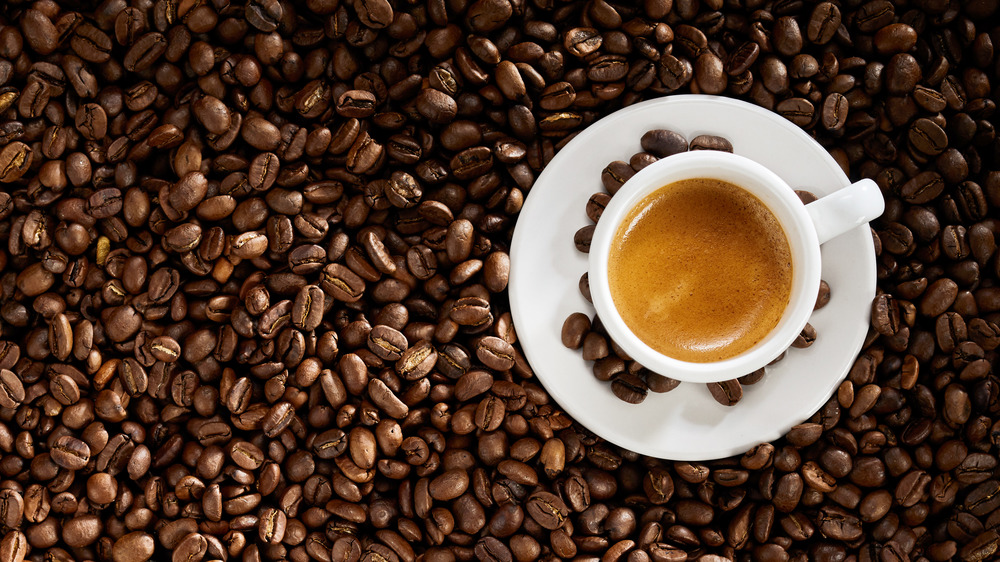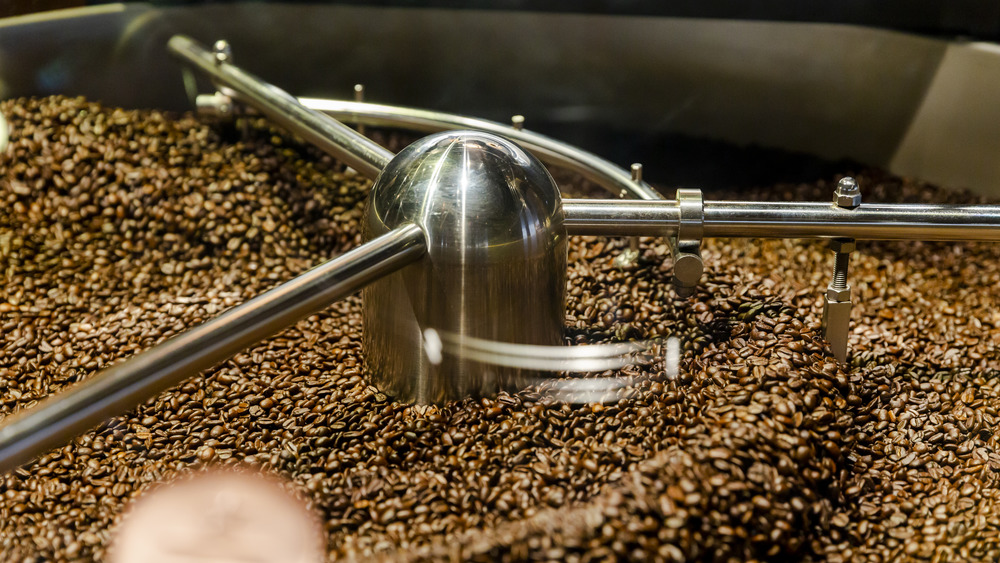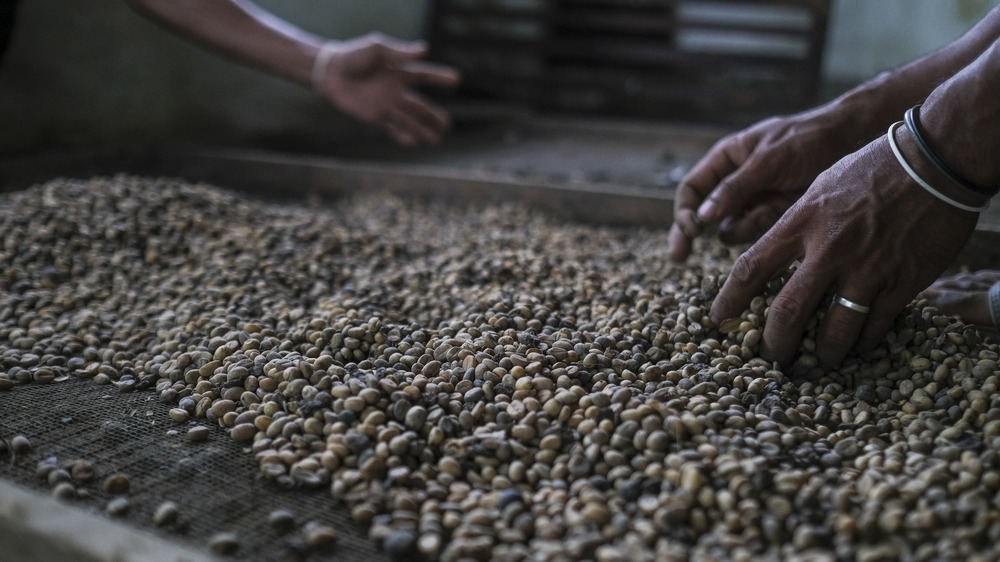Coffee Expert Reveals Why Using Old Coffee Beans Is A Major No-No
Making the perfect cup of coffee takes practice, and knowing how to select the right bean can make or break your cup of morning joe. According to Coffee Makers List, roasting date, amount of caffeine, and choice between an Arabica or Robusta bean all shape the flavor profile of your next pot of coffee. If these variables have your head spinning, don't worry! When you want to take your coffee game to the next level, just remember to only use fresh beans.
According to Homegrounds, coffee beans and brewed coffee face the potential to spoil, and improper storage can do a ton of flavor damage to your potential beverages. In order to understand the consequences of using old coffee beans, Tom Saxon, Head of Coffee at Batch Coffee, shed some light on the bean selection process and guided us through the perfect way to shop for coffee. By combining Saxon's advice with a little bit of practice, we can all avoid bean spoilage and understand a bit more about the subtle art of coffee making.
The origin of the freshest coffee
The coffee we know and love at the supermarket has to travel massive distances to even end up in our neighborhood. "Coffee is firstly picked and processed at origin and sometimes rested in the raw green form for many months and sometimes up to a year," Saxon explains. "The sacks of green coffee then arrive at coffee roasters via a chain of middlemen. The coffee is then roasted and rested again for around a week before it is sold and ready to brew. So, actually, by the time you come to drink some coffees, their beans may have been picked over a year ago."
You should aim to use the beans shortly after the roasting process comes to a finish. "The optimal time to consume the coffee is around five to ten days after the coffee has been roasted," Saxon says. "This is when all the flavor compounds are at their best."
On the flip side, you can immediately tell when you take a sip of old coffee. "Brewing old coffee beans will certainly leave you with a below-par cup of coffee," Saxon says. "As the beans become older, the brewed coffee will start to taste flat and almost like cardboard. As the coffee beans become even older they may start to taste rancid as certain flavor compounds become muted."
Staying ahead of this aging process remains crucial if you want a good cup of joe.
Identifying the right beans for the right roast
Certain roasts start to look different as they age. "Dark roasted coffee that previously looked oily will become matte in appearance, the oils that create the balanced flavor profile are lost and old coffee beans will therefore lack body as well as being unbalanced," Saxon said. He further adds that lighter roasts, which often look matte when they're at their best, will lose oil and their smooth taste.
Preparing coffee from these old beans may even damage your household appliances, especially your grinder. "The oils that are now on the exterior of the coffee bean may in time build up and clog the burrs of the grinder," warns Saxon.
If you take a sip of coffee and notice something is off, don't panic. It might taste gross, but it won't harm you. According to Saxon, "Because they have an extremely low moisture level they are classed as a dried product and therefore shouldn't become moldy."
So, the next time you need to decide on a coffee bean, don't skimp out on an older roast. For the best experience, pick up a bag of fresh beans that just completed the roasting process, and you can prepare to enjoy a great cup of coffee.


